Artist, writer, lecturer and author Cas Holmes needs little introduction from us – she’s one of our most experienced and popular artists.
Cas has been working with textile art since her fine arts degree in 1983 and is known for the unique surfaces she creates with paint, dye, layers and stitch – techniques she cleverly combines with discarded cloth, paper and found materials.
With a stack of awards, commissions, books, exhibitions, community projects and workshops behind her, we asked Cas how her ideas and work have changed over time.
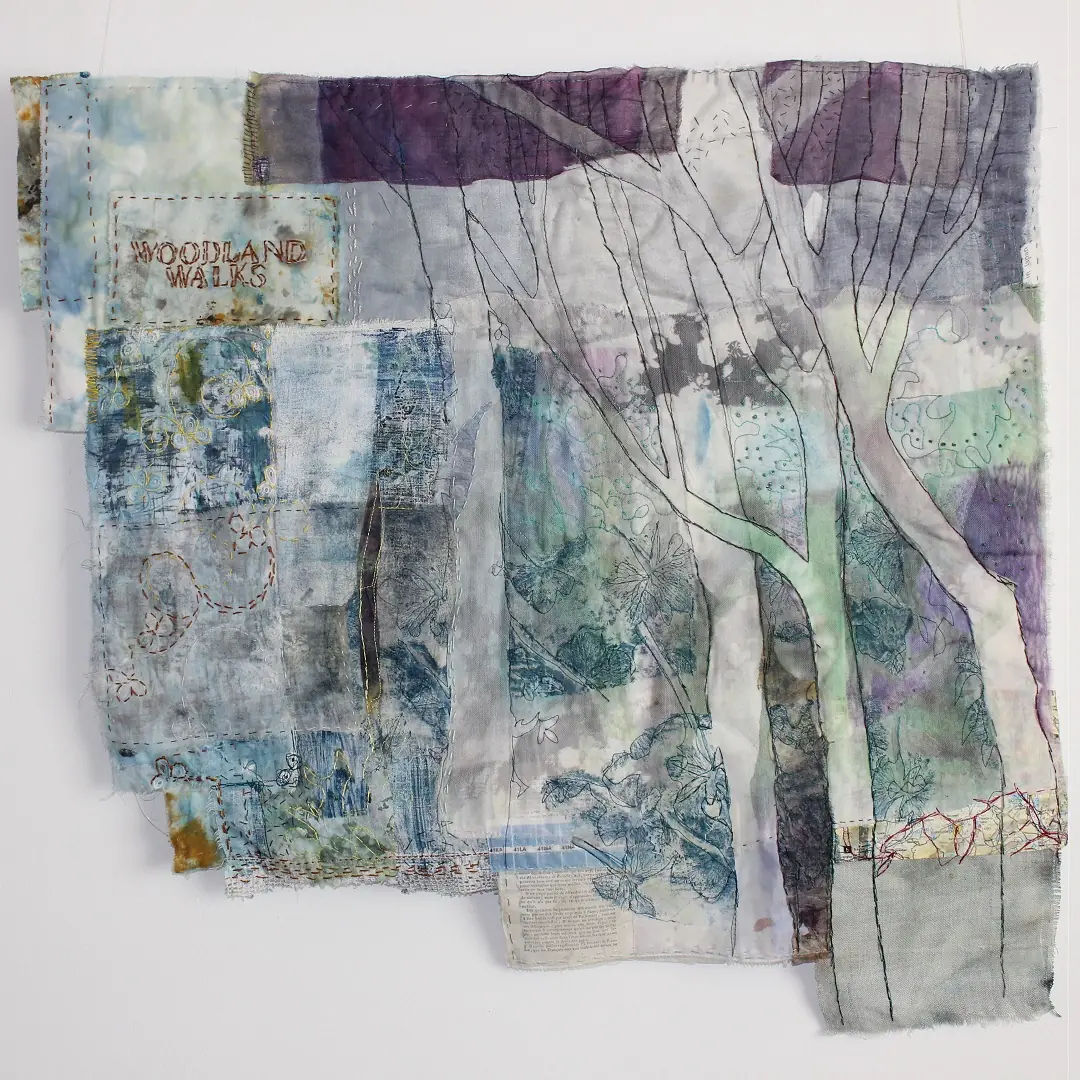
The simple things
TextileArtist.org: How did painting, drawing and textiles capture your imagination?
Cas Holmes: I have become known for developing my work in response to textiles with a focus on using found materials. The way in which I apply image, material and media does not readily fit into the edges of a canvas or frame and has been described as ‘painting with cloth’.
I discovered the act of destroying and reconstruction in my work as I was painting over a previously painted canvas as part of an art project at college. The original image kept coming through and in frustration, I ripped up the canvas. I looked at it and said, ‘Oh, this is more exciting.’ I thought the substance of the canvas was more important than what was on it.
As resources and finances grew tight I started to experiment with waste paper and fabric as surfaces to work on.
The next logical step to making larger works was to piece them together somehow, and stitch seemed the most obvious way.
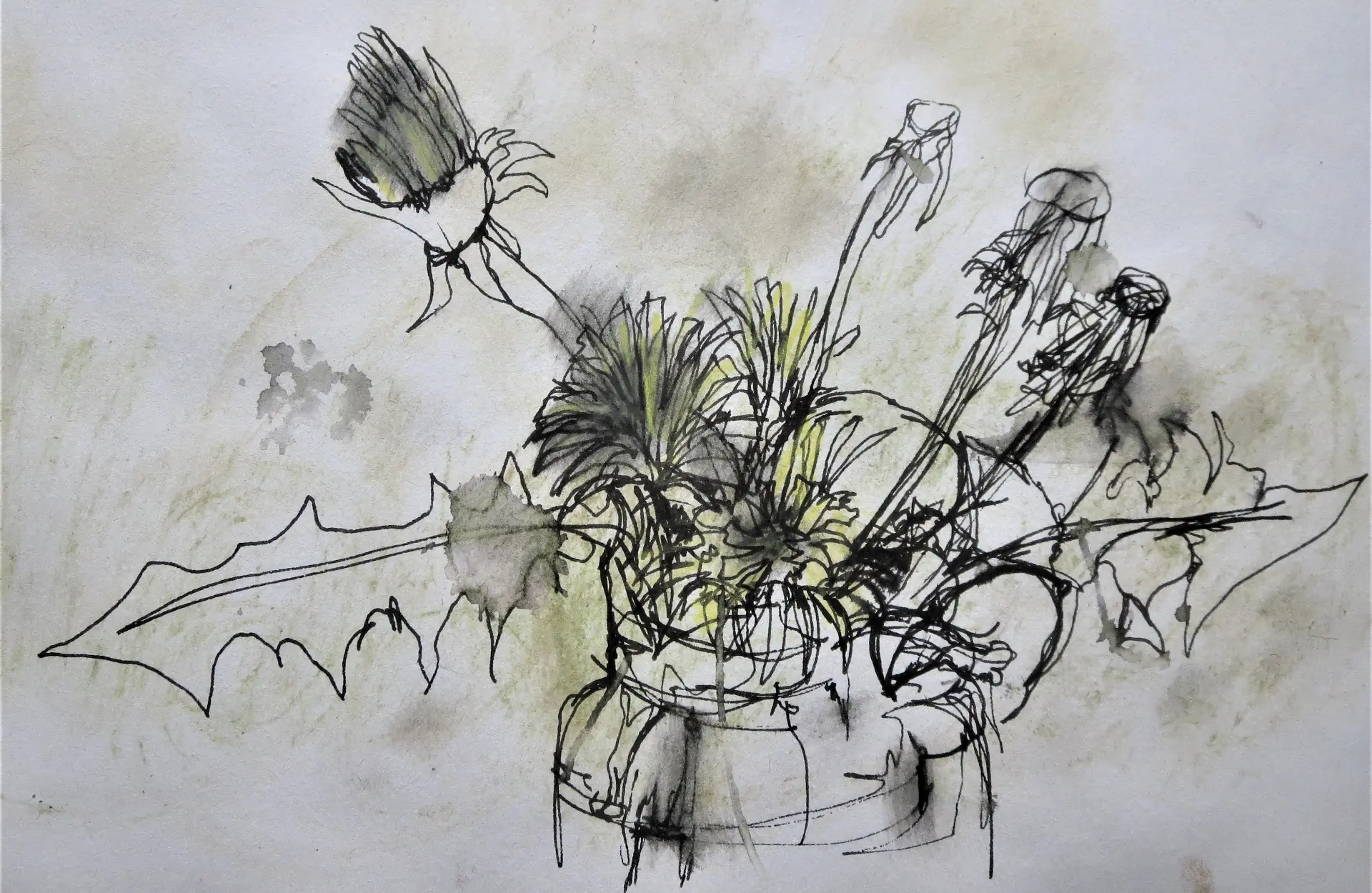
How has your work developed, and how do you see it evolving?
While I continue to develop my techniques, drawing and use of colour remain the foundation for all my work. For me, the process of working with fragments of found materials marks the passing of time. The rituals of making (drawing, gathering materials, cutting, machining and sewing) act as part of the narrative of the work. I work reflectively with materials so nothing I make is ‘designed’. Pieces evolve and change until the last stitch, paint or mark is made.
My work reflects transition and change, and I enjoy working on projects in different spaces. My training as a community artist has seen me work in all kinds of venues, from hospitals to theatres, on buses and in churches, in response to people and place and is never static.
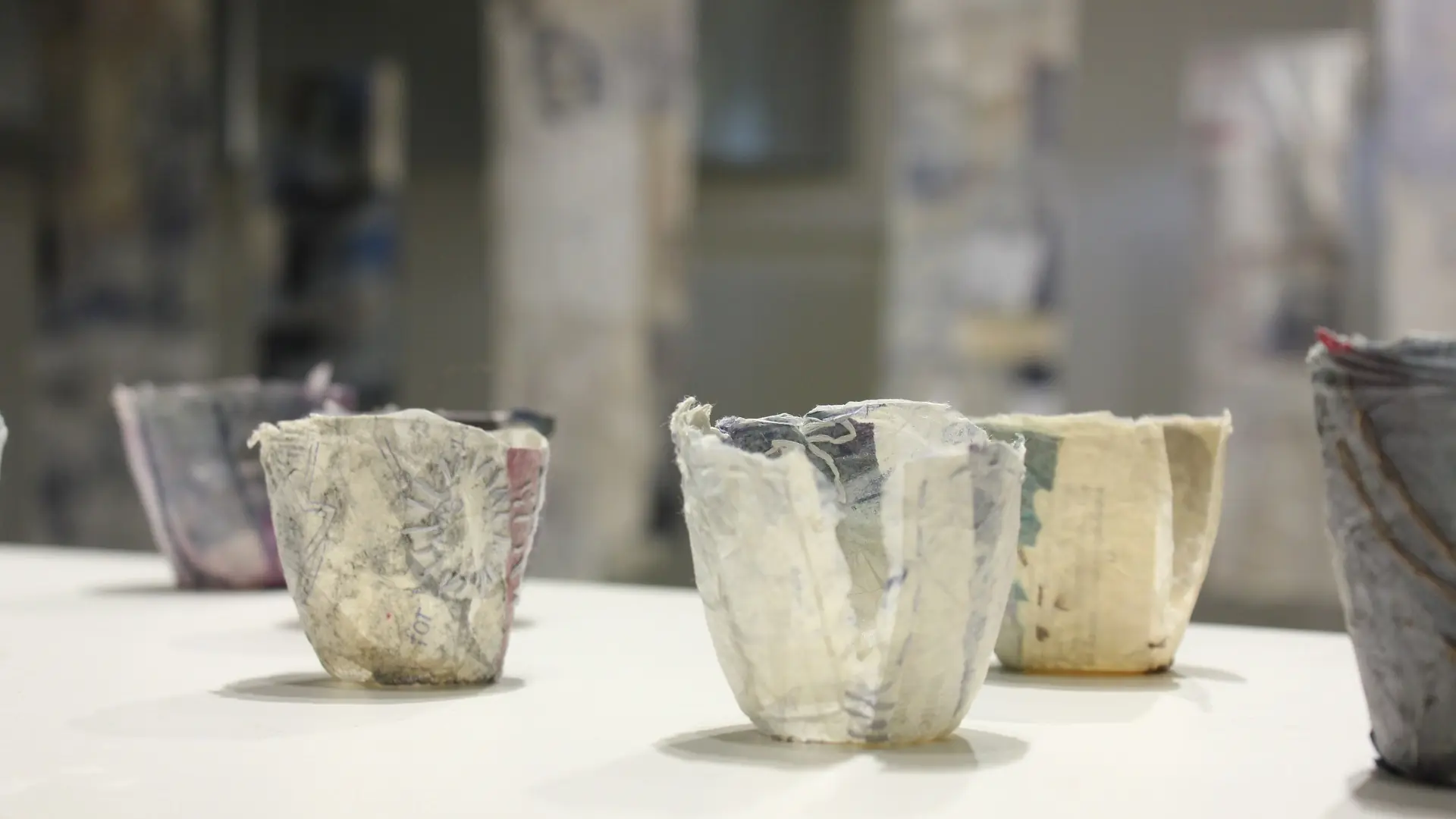
Since 2020, where circumstances have required me to work from home, I have become more adaptable in my approach to teaching and exhibiting. As a result, new and exciting opportunities have arisen for me to continue my practice in a more sustainable way, and in response to my circumstances.
I am currently working on new collaborations for 2023-24. This includes my next exhibition Illuminate with Art Textiles Made in Britain, and participation in a new exhibition with the Romani Cultural and Arts Company.
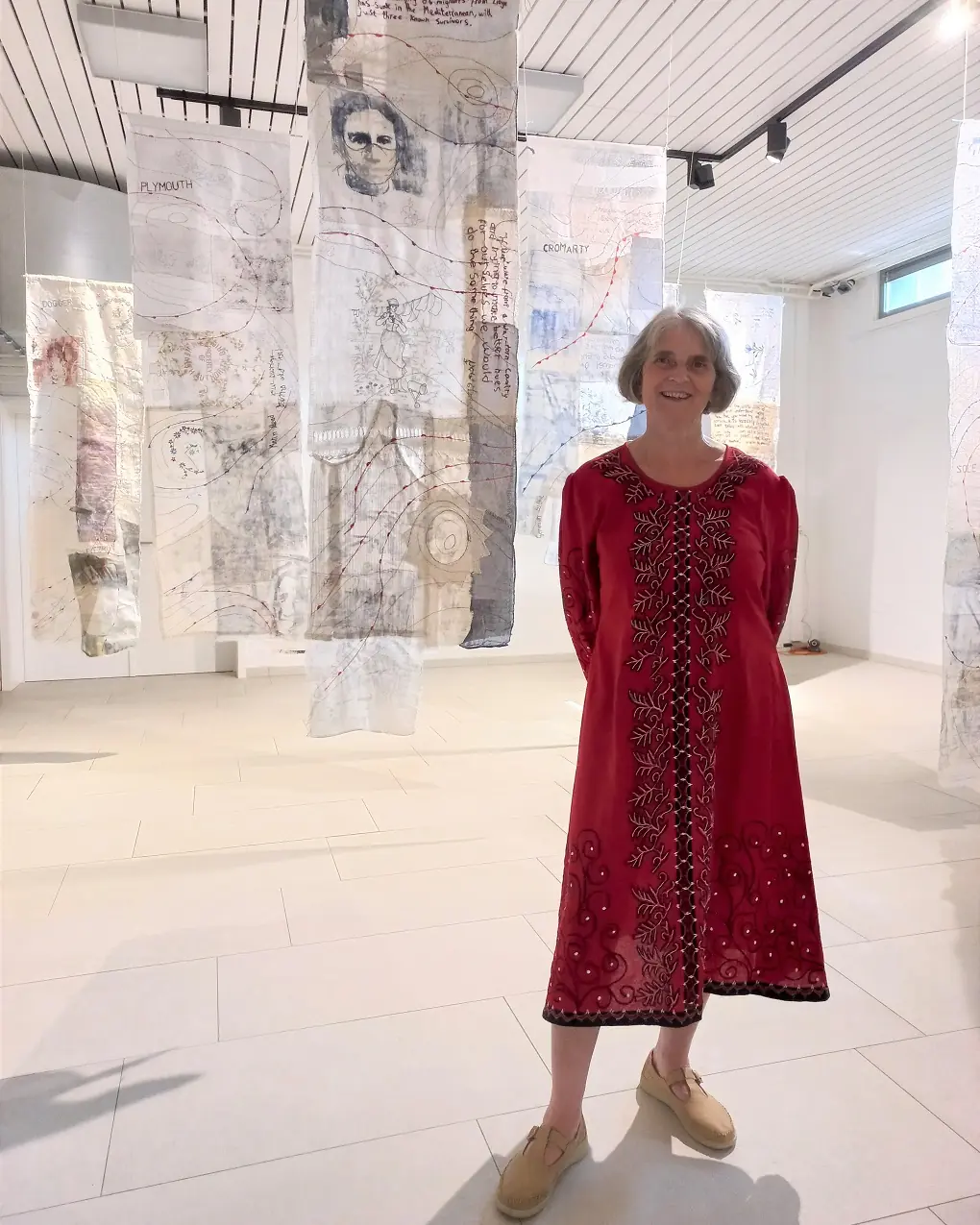
With a focus on landscape, nature and everyday subjects, my work continues to explore the play between the media of painting and textiles – in usage and in subject matter. It’s a liminal space where change takes place and where the media, traditions and techniques of stitch and paint merge.
The line between art and craft is constantly being eroded and I enjoy working in this rich and challenging in-between world.
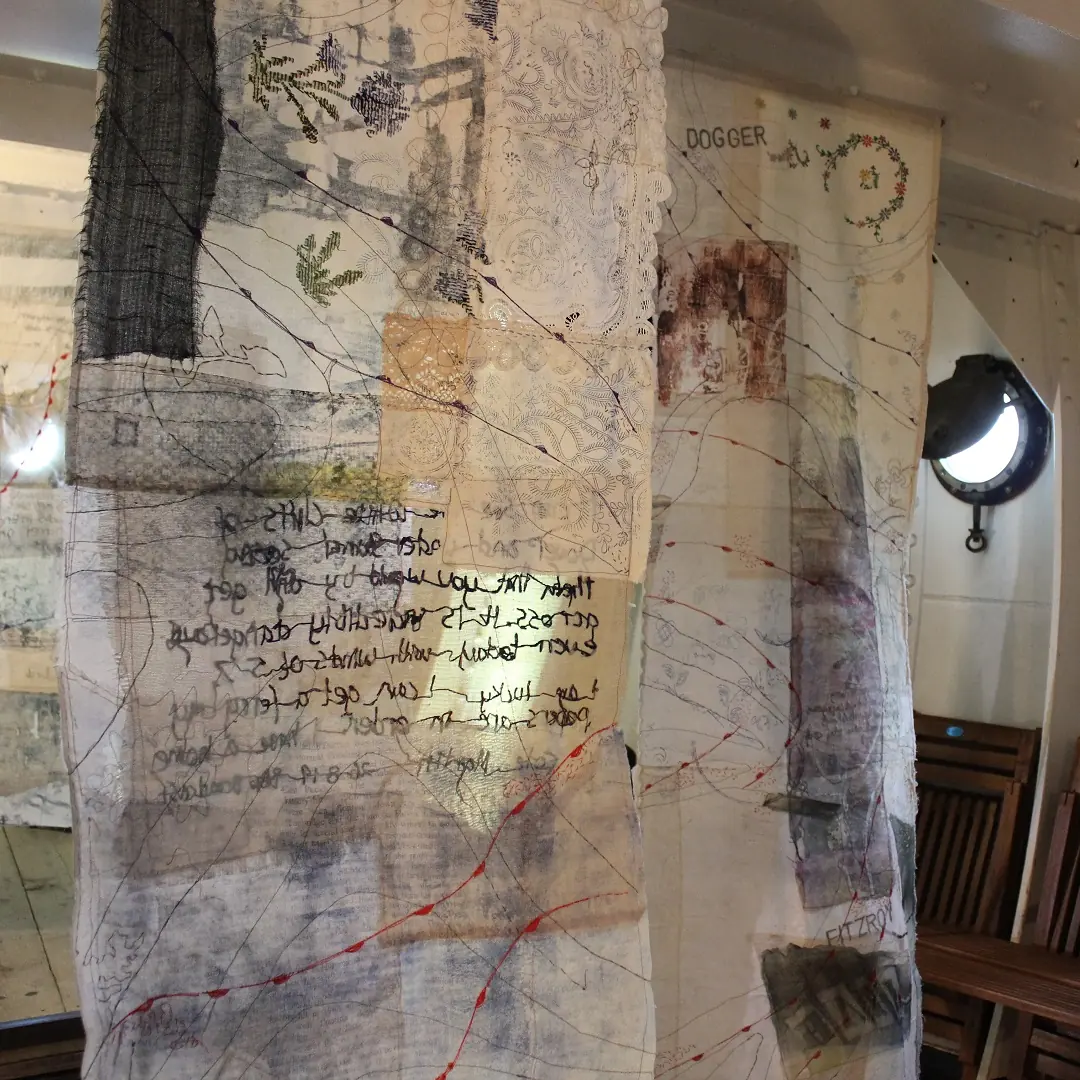
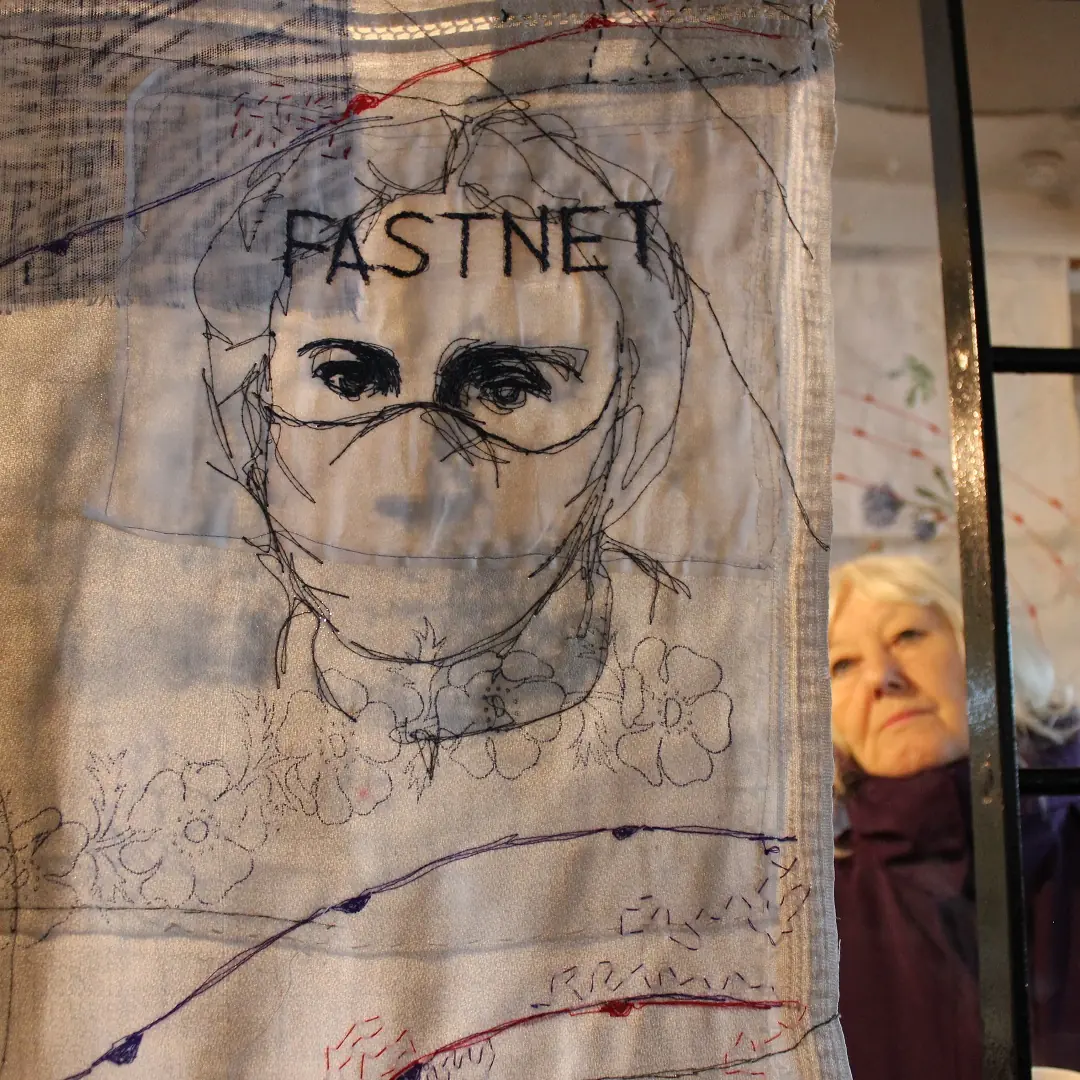
Celebrating life’s imperfections
Tell us about some of your most recent projects
In 2020 I worked on a specially commissioned project Places, Spaces, Traces as part of Gypsy Maker 4 supported by the Romani Cultural and Arts Company and Arts Council of Wales which toured physically and virtually. It was exhibited during the summer of 2022 at Anna3, a cultural centre located in Sint Anna ten Drieen in Antwerp, Belgium. New works have evolved from this project reflecting the notion of identity and place, and in 2022 they were exhibited on Light Vessel 21, Gravesend, UK and at R Space, Lisburn, Ireland. The tour continues in the UK in 2023-4.
Deena Beverley, who wrote the foreword to my book Embroidering the Everyday (Batsford 2021), described beautifully the book’s focus and my intentions for it: ‘Cas invites us to re-examine the world and use the limitations sometimes imposed by geographic area or individual circumstances as a rich resource to develop ideas for mixed media textiles in a more thoughtful way. The book is packed with inspirational work from the author and other leading practitioners who place the everyday at the heart of their work. This treasure trove of ideas, techniques and practical projects is an essential guide for our times.
‘An innate acceptance and even celebration of life’s imperfections is apparent throughout Cas’s approach. It takes a special artist to ‘see the world…in a grain of sand and heaven found in a wild flower’…. we believe that when you grasp your own copy of this book, you will be taking on new values and new pathways of discovery, a new special way of seeing the beautiful.’
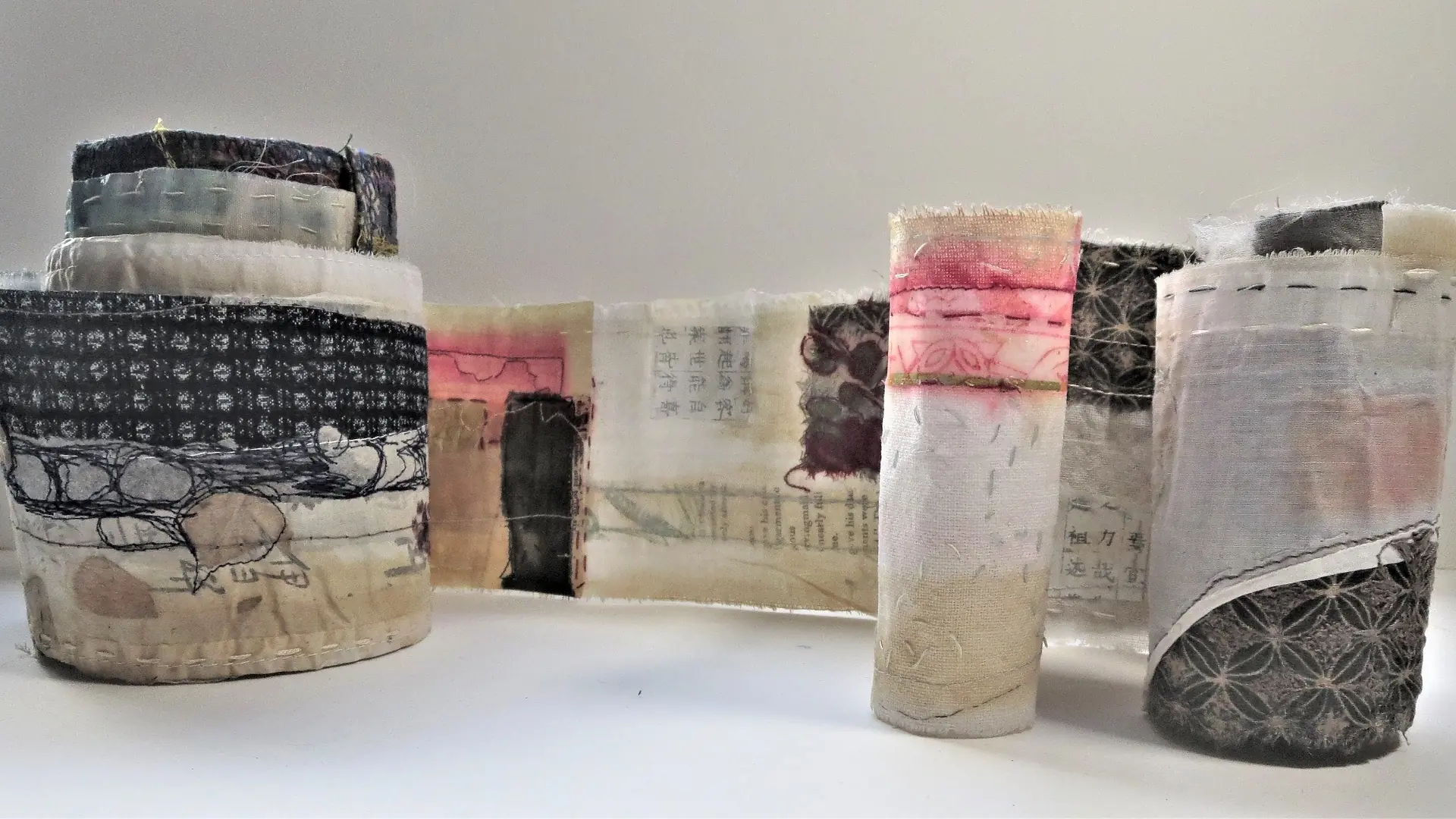
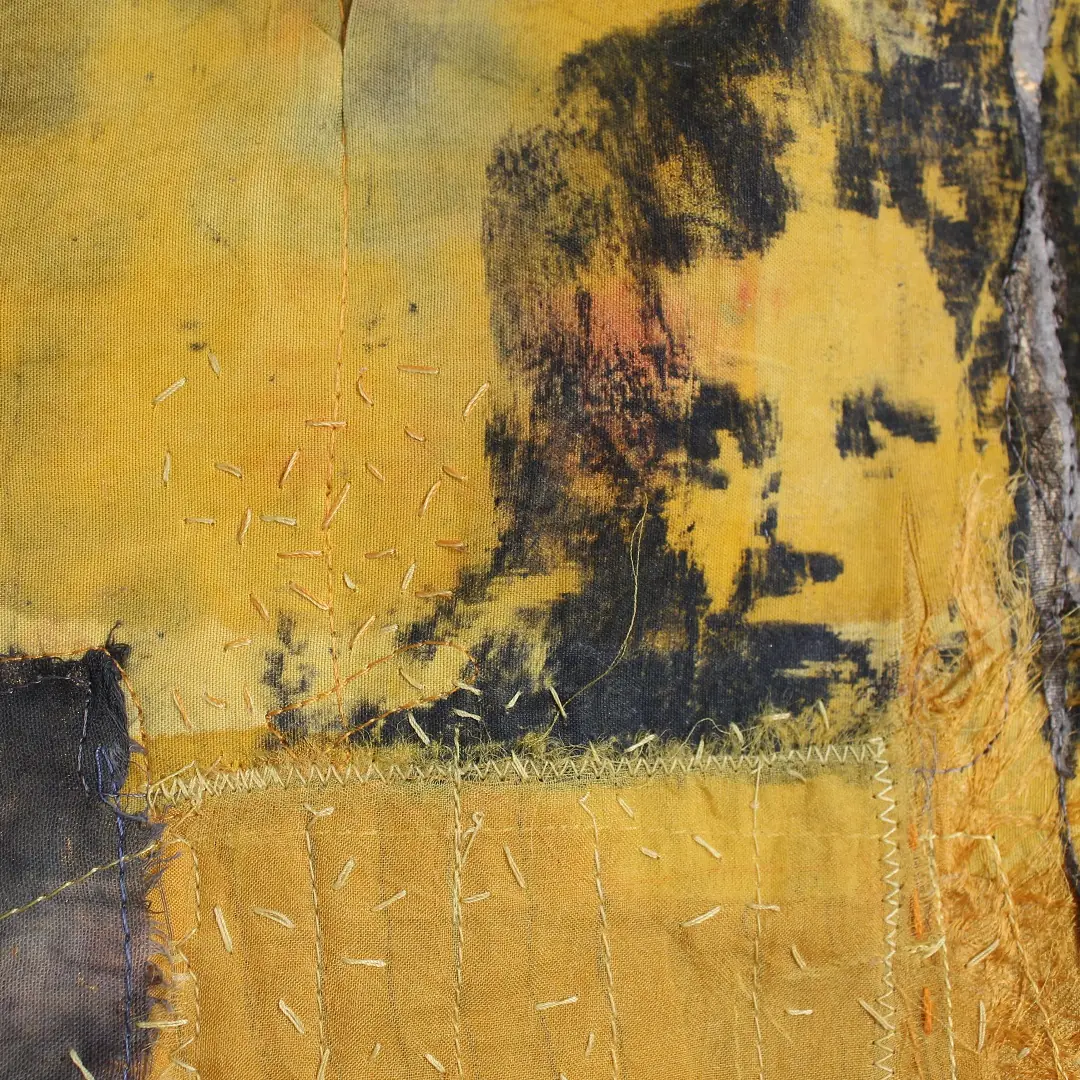
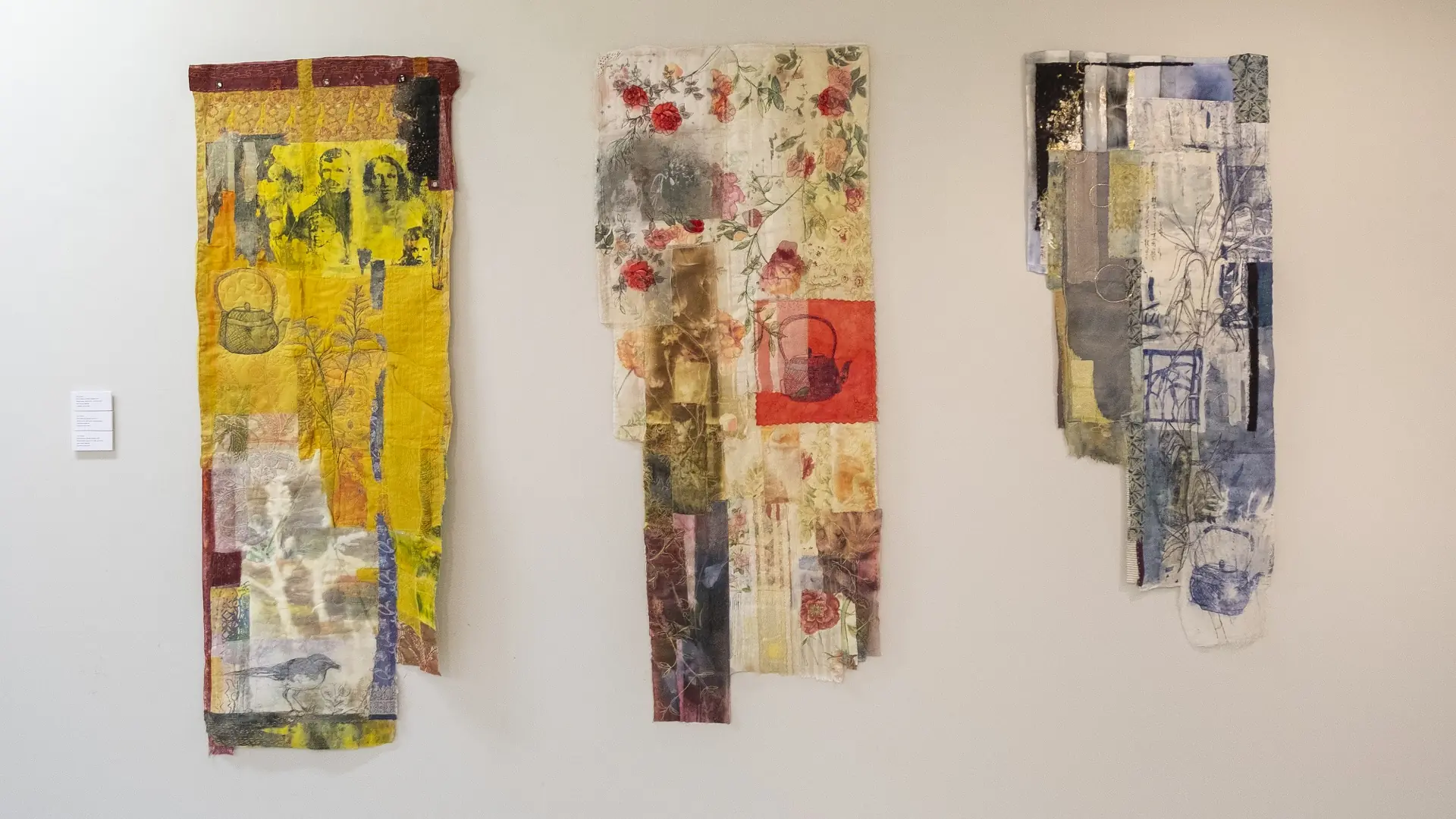
What or who were your early influences and how has your upbringing influenced your work?
Studies in Japan, India and in Canada allowed me to adapt processes and develop a unique response to the use of found materials and cloth. Equally, both my grandmother and my father encouraged me to explore and use what is already available. My grandmother was a Romani Gypsy and led a thrifty life full of stories. My father loved a good tale and studied signwriting at Norwich School of Art.
No one who has grown up in the flat Norfolk landscape as a child can fail to make connections between its change over time and man’s impact on the land through farming, building and use of world resources. These changes influence my work.
During my last year as a college student, I did some voluntary work at the local hospital and enjoyed getting the staff and patients involved in creativity.
More recently, the day to day realities of my life have shifted, both through the pandemic and personal circumstances, giving me time to pause and reflect. With restrictions on my practice, the often overlooked things and the imagery and materials found in the simple things provide a rich resource for continued work. It could be argued that referencing the everyday as part of the creative process has always had a role to play in society – historically, politically and socially – beyond the pleasure it gives in itself.
Working with different projects and regular teaching form a major part of my creative professional life. It keeps me firmly grounded and encourages a continual challenge of ideas.
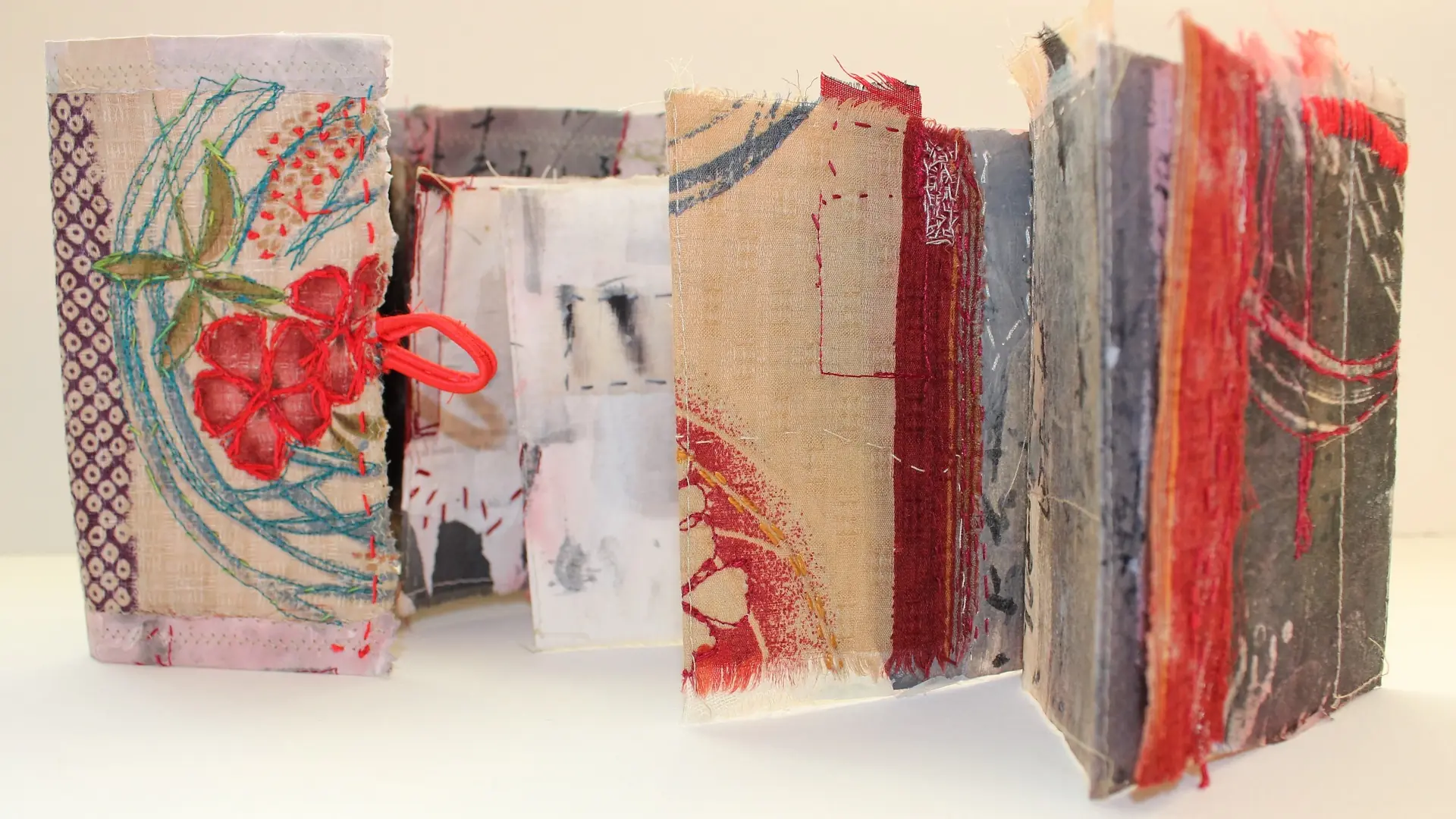
What have been your major influences and why?
I’m influenced by any art, writing or music that talks about the world around us. I’m specifically interested in the point where cloth meets or merges with painting and other media. Thrift and re-use referencing the everyday inspires me, also the work of generations of stitchers who have gone before.
I admire the work of John Sell Cotman, Paul Nash, Sonia Delaunay, Louise Bourgeois, Eva Hesse and David Hockney, whose communication is brilliant. Mingei, the folk art of Japan, is fascinating for its focus on the hand made, as is the principle of wabi-sabi, a Japanese aesthetic concept that finds beauty and serenity in everyday things and objects, the simple, imperfect, and impermanent. I’m also touched by mottaina, the sense of regret felt when something valuable is wasted or otherwise ‘too good to waste’. Vaughan Williams’ music founded on English folk tradition resonates deeply with me. I could go on … the list changes.
Nowadays, there are so many helpful resources available. Some of my favourites include Embroidery and Today’s Quilter (UK magazines), and online www.textileartist.org (of course!), www.arttextilesmadeinbritain.co.uk, the British textile artists’ group, and www.romaniarts.co.uk, a Romani arts and cultural website.
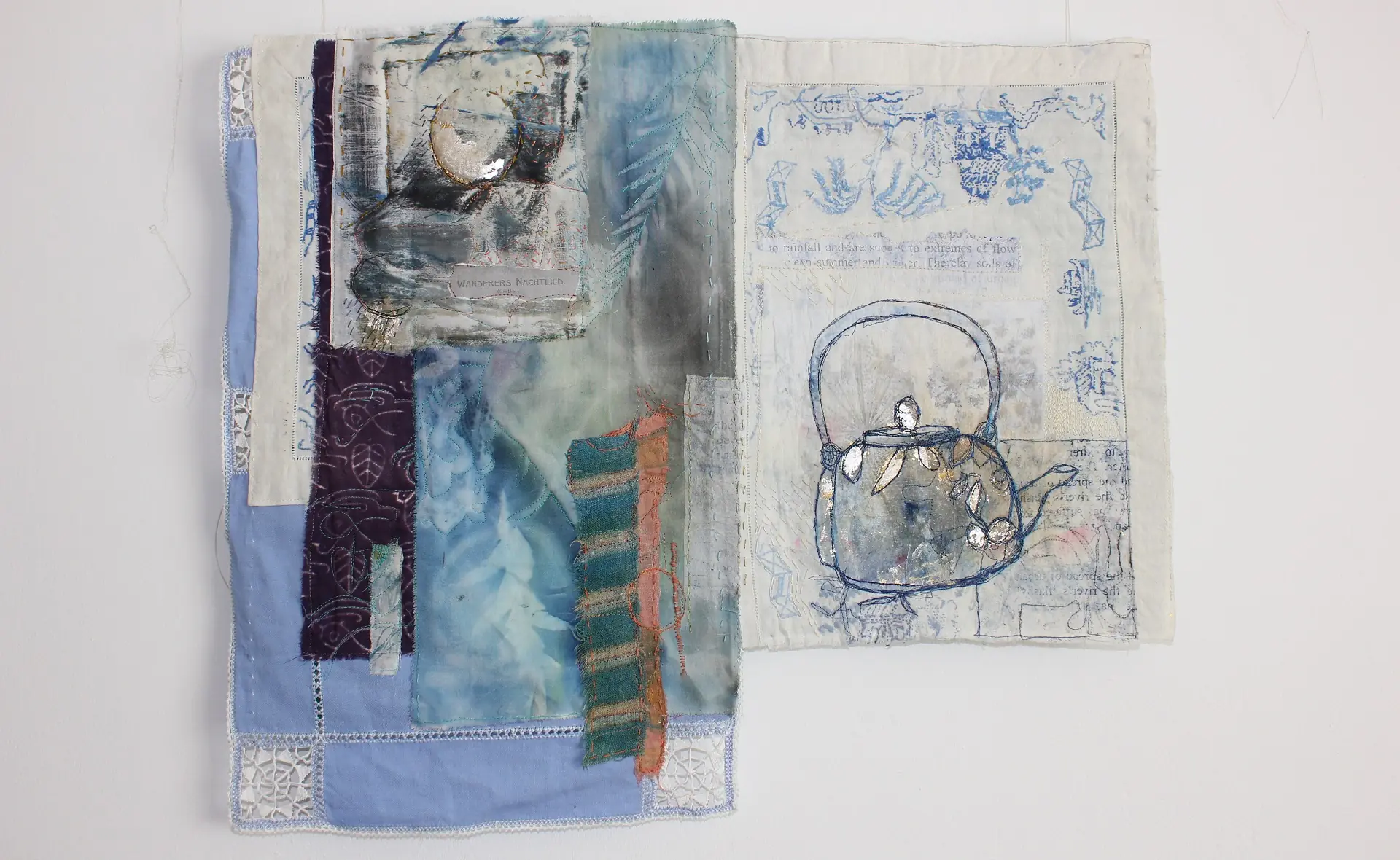
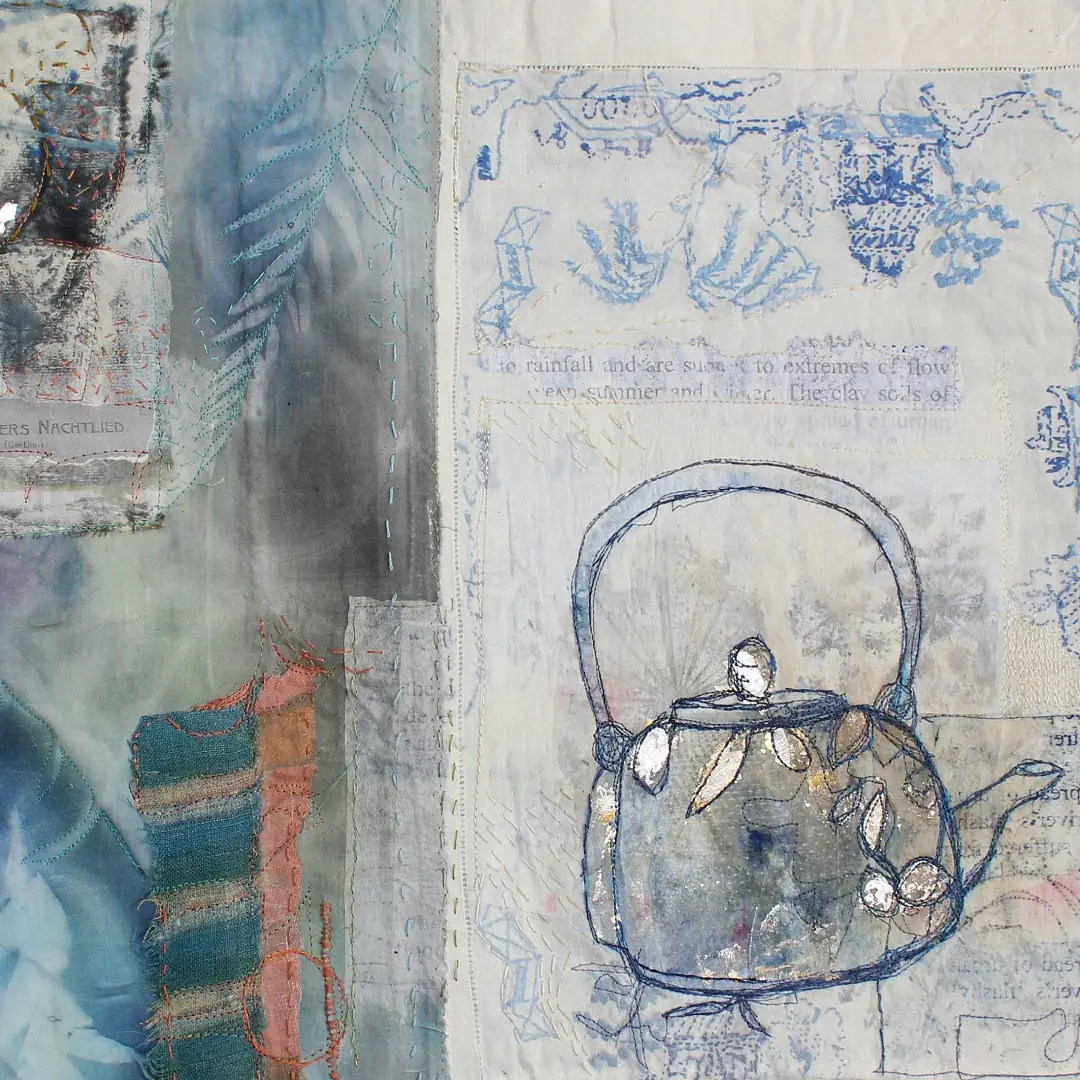
The human connection
Tell us about your process from concept to conclusion
A big part of my work is the human connection, and this is reflected in the materials I use and the familiar places visited. Many of the textiles and papers I use are from cast-off clothing and household cloths, from family, domestic and family memorabilia and everyday waste paper, as well as things gathered in my travels. I’m interested in the history and familiarity of these materials and their connection to our life.
I seek the often overlooked aspects of the world around me for inspiration: the verges of our roadsides, railway cuttings, field edges, the places where our gardens and homes meet the outside spaces.
I sketch and make recordings as I walk or travel. In quiet times at home I work locally, painting, making marks and stitching to capture the atmosphere of a place or moment.
The depth and tactility of textiles and the manipulation of materials provides another dimension to the surface. It’s particularly apt as I try to portray the shapes and forms I see in the natural world, the landscape and everyday subjects.
The texture, details, shapes and colours of the outside world provide an infinite stimulus to draw upon.
My practice was aptly described in an essay written by Moira Vincentelli for the exhibition Reflections:
‘At first glance, the materials and techniques Cas uses give the impression of something we ‘already know’, yet the artist is able to conjure up familiar images and associations and give them new meanings. Stitch, cloth and memory combine with paint, mark and image to create layered ephemeral pieces in which nothing is explicit.
Influenced by the ideals of wabi-sabi – things often overlooked, details, worn surfaces and the beauty found in the transience of things imperfect – her work often contains snippets of text or discarded materials that have associations or conjure up memories. There is always a dialogue with the materials she uses. They bring their own history which is woven into the work. These collections of ephemera might seem meaningless but their apparent banality is open-ended. They are available to stimulate the imagination through the poetry of ordinariness. Everything has a connection and each viewer makes their own connections.’
Moira Vincentelli
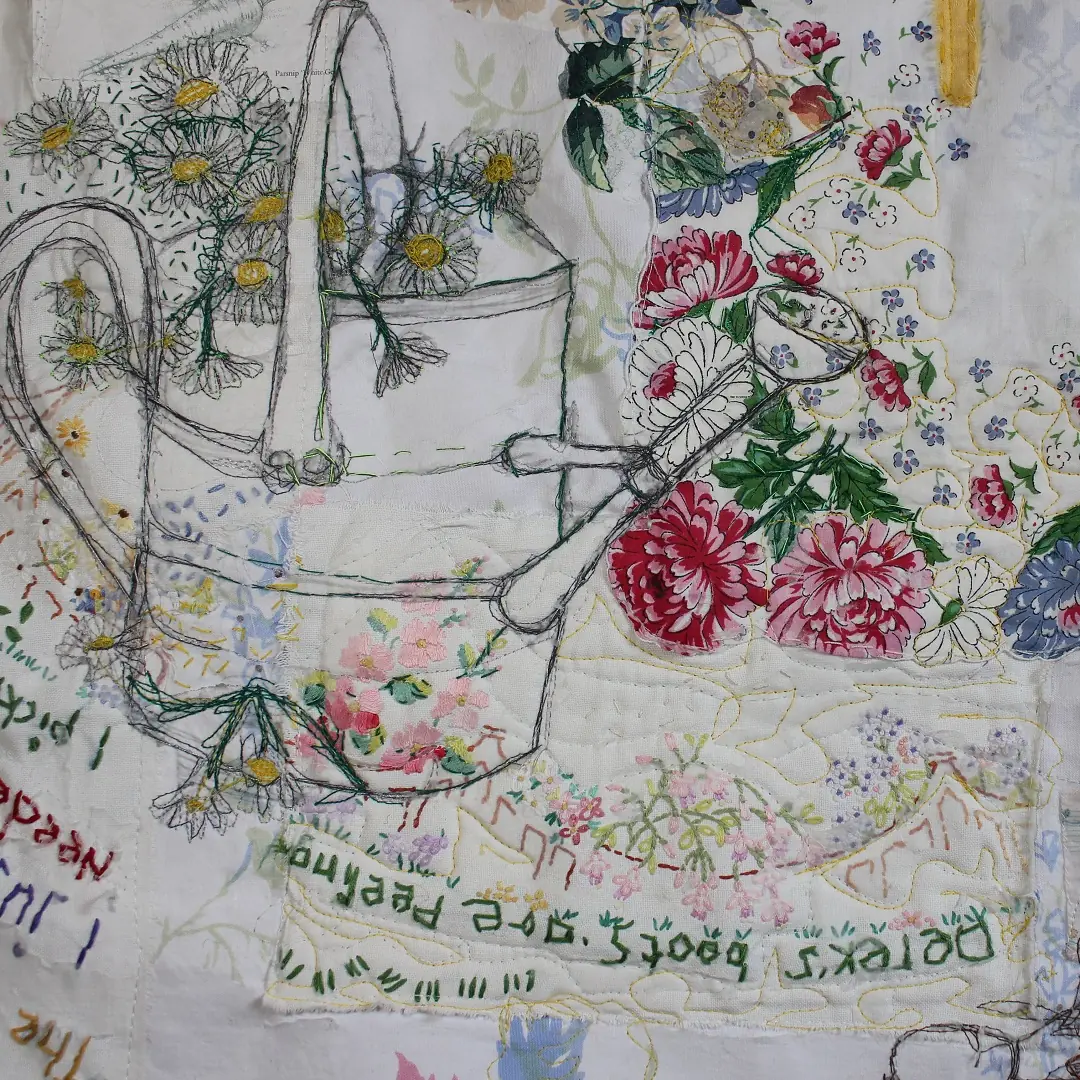
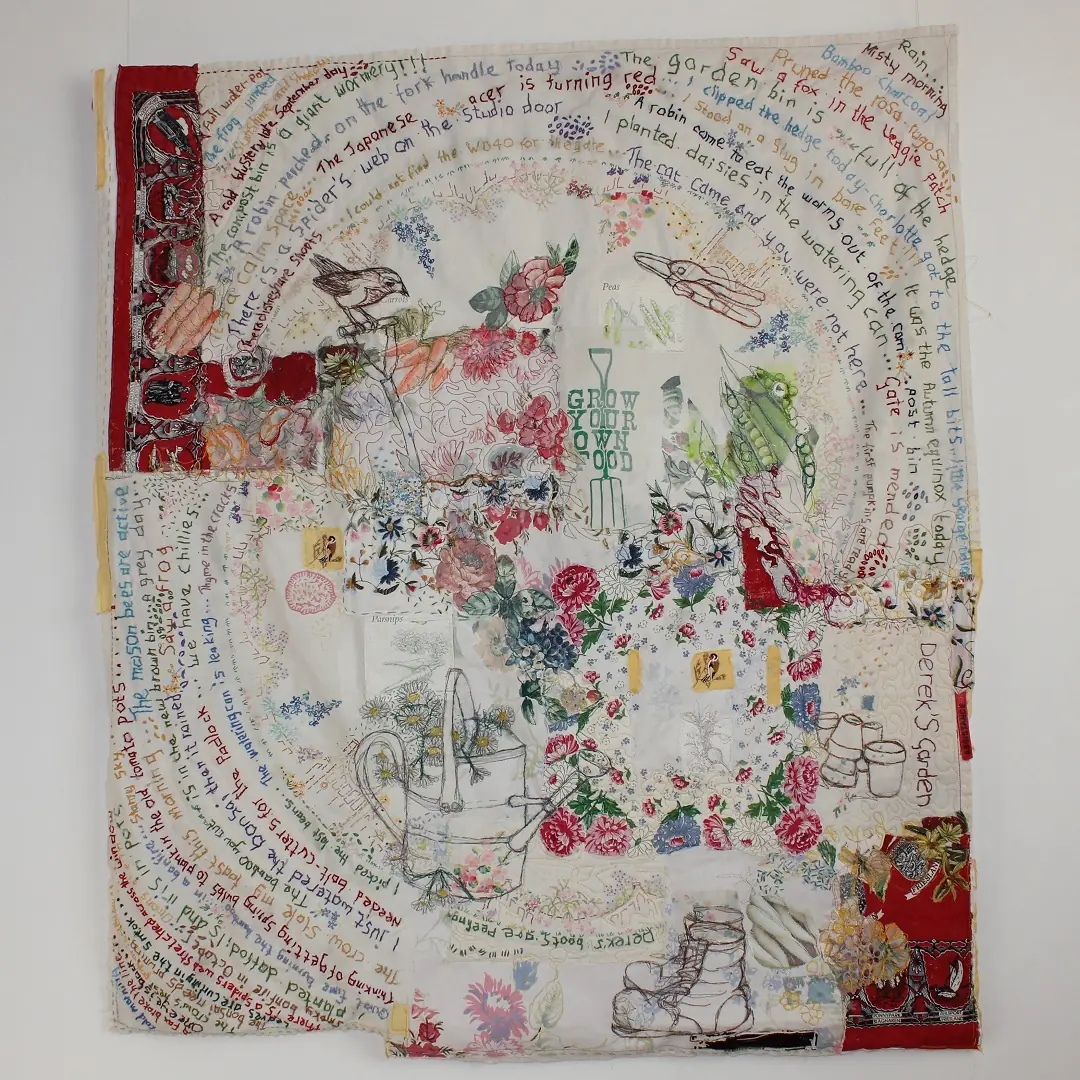
Do any of your artworks hold particularly fond memories?
During the pandemic, I often sat and watched my life partner, Derek, working in the garden perched on a wall, sketchbook in hand. In the latter part of 2021 he had a stroke, which has meant a massive change for both of us and my life as an artist-traveller. During 2022 I became the worker in the garden, not the watcher.
A number of things came to my attention whilst tending the garden. I needed to repair the gate lock and look at repotting some small plants he was nurturing, as well as repairing the greenhouse after the storm in early spring. The act of gardening became a balm for my worried mind.
In the quiet evenings, I took to hand stitching words relating to my discoveries onto fragments of an old table cloth. From these fragments, I combined the text with seed packets and gardening memorabilia to create a celebration of Derek’s garden.
The act of gardening provides us both with sustenance and we work together on the garden when we can. It offers us a familiar respite in a world that can sometimes lack that quiet and calm. This piece holds a promise that there are still things we can enjoy, and to myself to continue my practice.
What advice would you give to an aspiring textile artist?
I would say be open to challenge and change. Give things a go and dare to create. Any aspiring artist needs to work hard, never give up and respect their work. It is never easy, yet it can be very worthwhile and rewarding.
Remember to draw, look and observe. The world can teach us a lot if we take the time to look.
It’s worth noting that you don’t need a big space to create. Our house is small, so every space is used, and it’s largely furnished with charity shop finds. Shelves above doors store books, while cupboards are squeezed into small spaces and hide all kinds of materials and equipment.
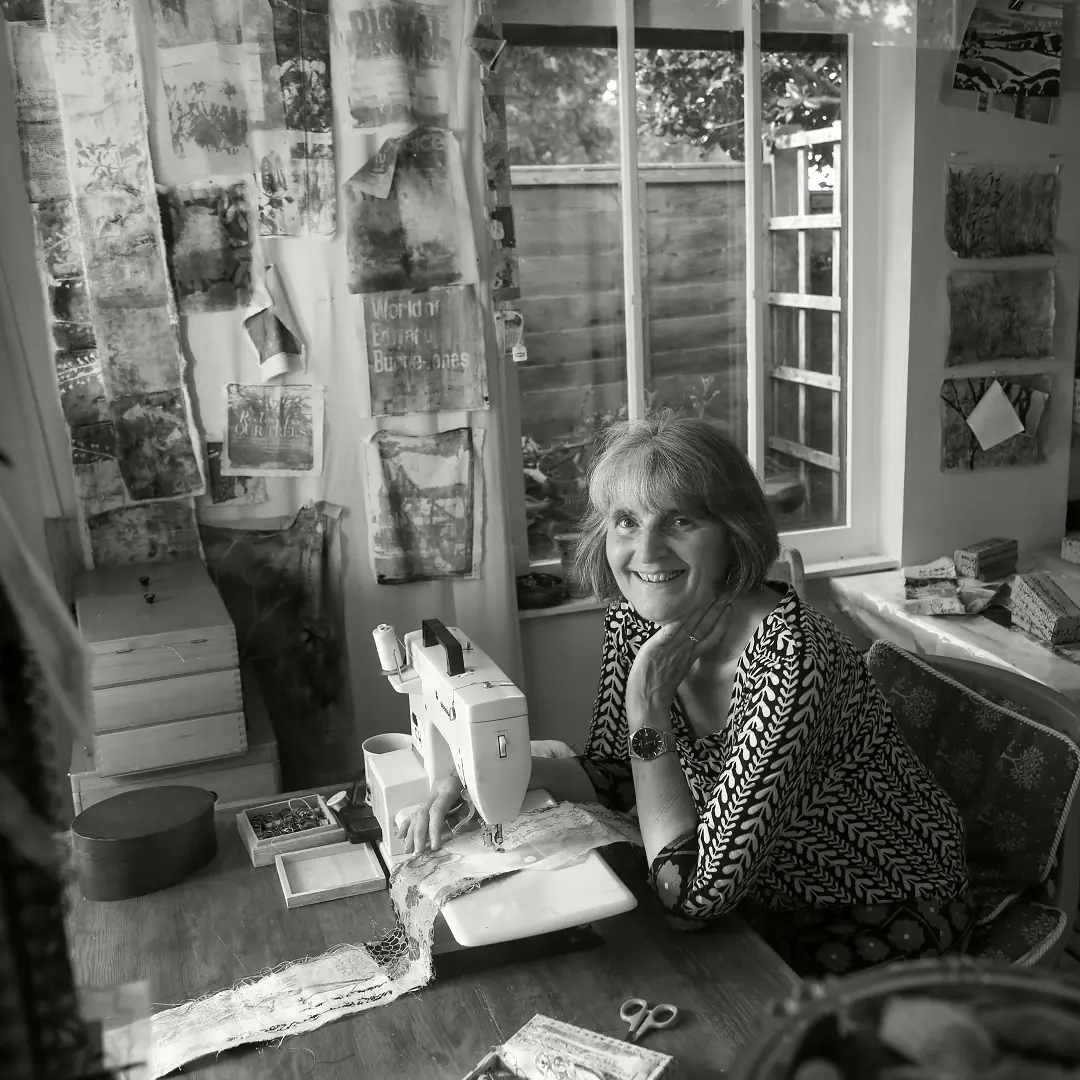
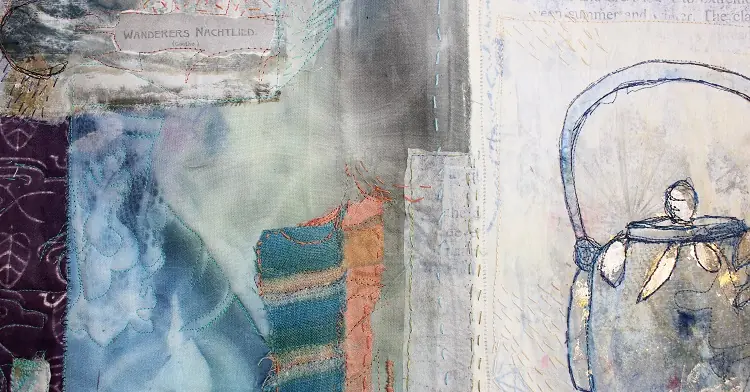

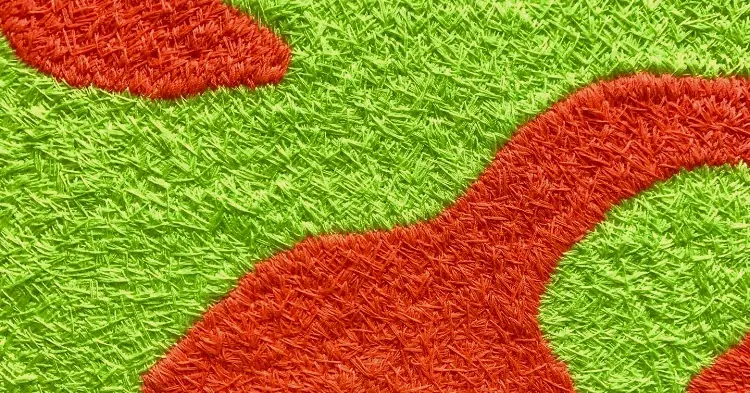
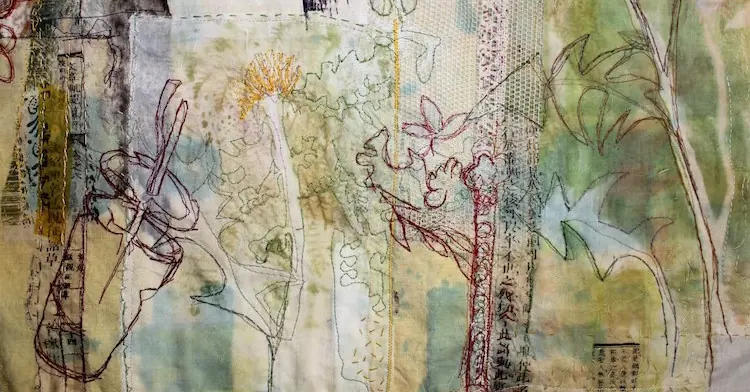
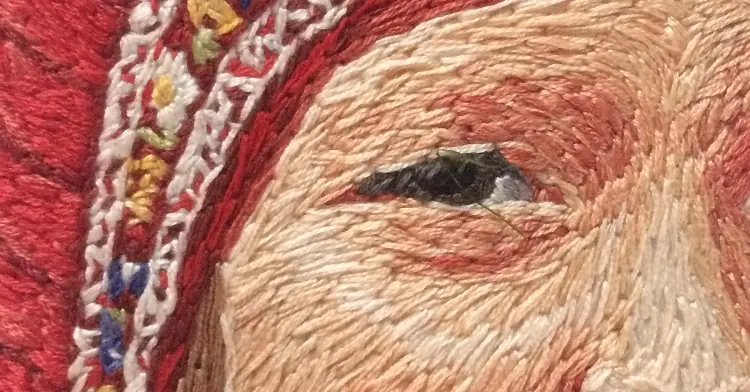
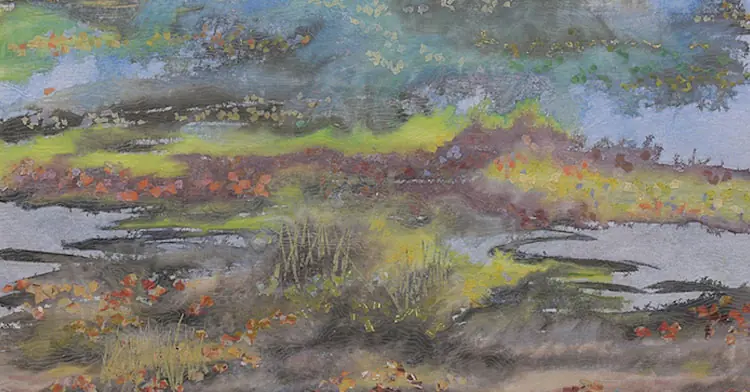

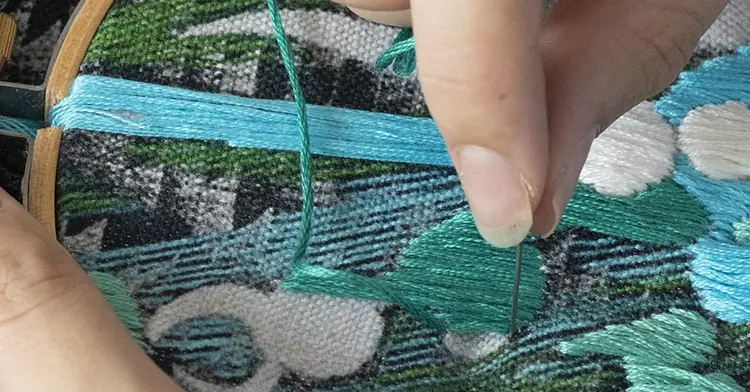
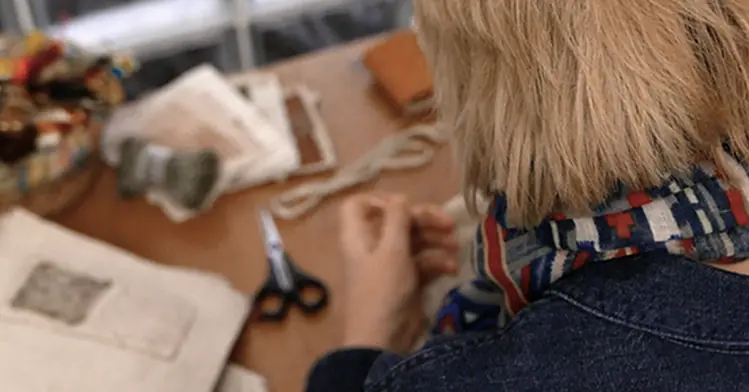
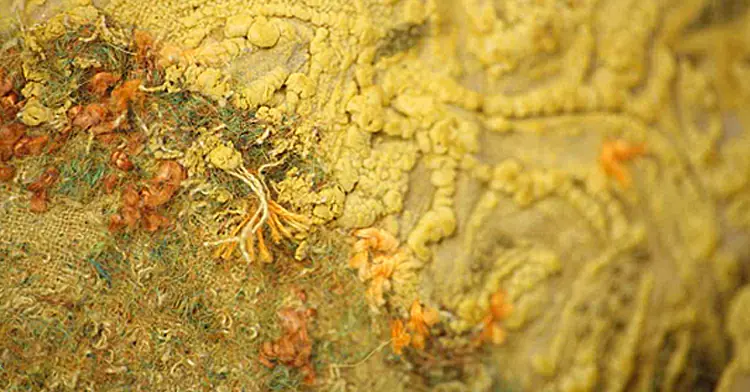
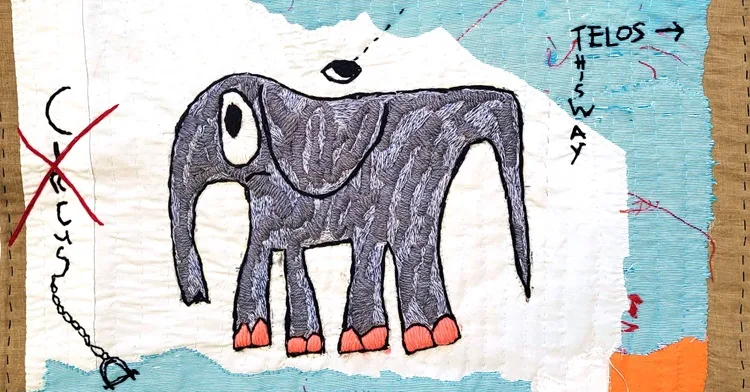
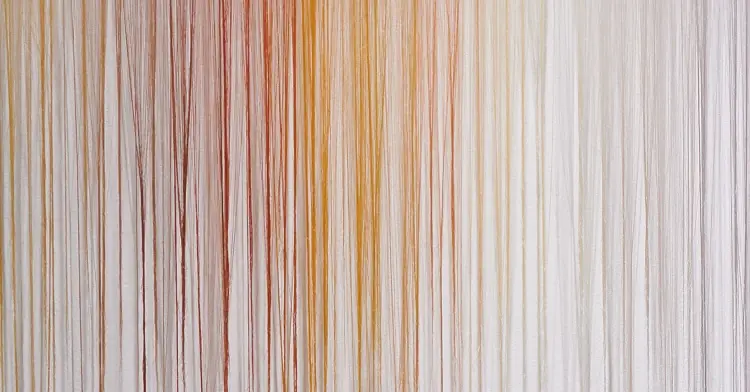
1 comment
Dorothea Dtewart
Did Miss Holmes ever paint & sign CAS to her painting?